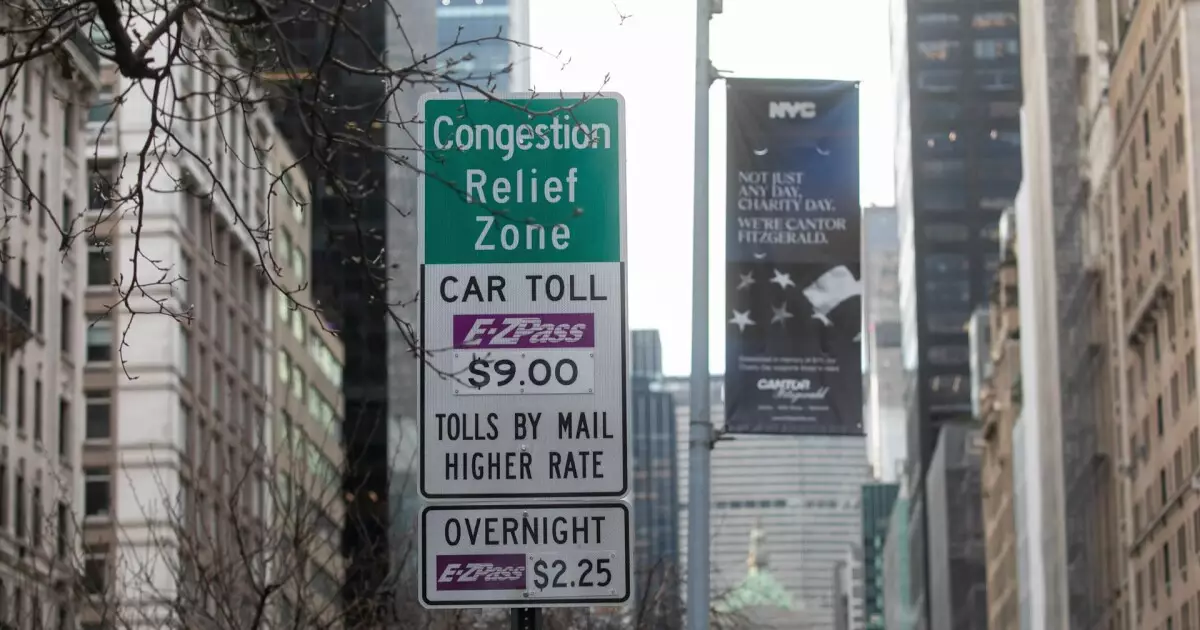The recent actions taken by the Trump administration to terminate federal approval for New York City’s congestion pricing program have ignited a heated debate about transportation, fairness, and the role of government. As the city aimed to alleviate its notorious traffic congestion and fund crucial public transport projects, the federal government’s pushback has not only jeopardized the program but also raised questions about the future of urban mobility solutions in cities across the United States.
Congestion pricing in New York City has a long-standing history, initially proposed by former Mayor Michael Bloomberg back in 2007. The intention was clear: to address the overwhelming traffic problems that plague the city’s streets, particularly in the Manhattan area south of 60th Street. In January, a $9 toll for most drivers was implemented, marking a significant milestone for this ambitious initiative. It was seen not just as a method to manage traffic better, but also as a means to generates needed revenue for the city’s Metropolitan Transportation Authority (MTA) to fund essential infrastructure projects, estimated at $15 billion.
Yet, despite these noble goals, the program faced a myriad of challenges, from legal hurdles to political opposition. The halt and subsequent revival led by New York Governor Kathy Hochul exemplified the program’s turbulent journey, reflecting both apprehensions over costs and the urgency to address New York’s chronic congestion issues.
The crux of the recent federal intervention came from Transportation Secretary Sean Duffy, who echoed President Donald Trump’s skepticism regarding the congestion pricing model. In a statement, Duffy characterized the program as a “slap in the face” to working-class Americans and small business owners, arguing that the tolls imposed created financial burdens on those who already contribute to the highway system through other taxes.
Duffy’s assertions were based on a critical point—namely, the lack of a toll-free alternative for drivers entering Manhattan, which he claimed violated the foundational principles of the federal government’s Value Pricing Pilot Program (VPPP). This program is designed to implement tolls specifically aimed at reducing congestion rather than merely generating revenue for transit systems. Duffy’s announcement of terminating the federal approval raised alarm bells for those invested in New York’s public transportation infrastructure, as it challenged the viability of a project many deemed beneficial for the metropolis.
In response to the federal government’s abrupt action, the MTA quickly mobilized to protect the program, announcing plans to file a lawsuit aimed at reinstating the congestion pricing initiative. MTA Chair Janno Lieber touted the success of the program up until this point—claiming it had improved travel times and reduced congestion levels. The pending legal battle not only affects the immediate future of New York’s congestion pricing but is also indicative of a broader struggle between local governance and federal oversight—especially in the realm of urban planning and transportation policy.
The litigation may also serve as a case study for other cities contemplating similar measures to manage congestion and fund public transport initiatives. Many urban centers across the U.S. grapple with similar issues of traffic congestion and the need for sustainable mobility solutions. As cities strive to modernize their infrastructure and embrace environmentally conscious practices, the tension between federal mandates and local needs will likely continue to escalate.
The ongoing dialogue surrounding New York City’s congestion pricing program reflects wider themes about the future of urban transportation. Accessibility, equity, and sustainability are increasingly taking center stage in urban planning discussions. New York’s congestion pricing initiative sought to place these principles into practice, aiming to not only curtail vehicular traffic but also to enhance public transit systems—addressing the diverse needs of its population.
In this context, the city’s battle with the federal government presents an opportunity for advocacy, policy reevaluation, and perhaps a call for a more comprehensive approach to urban challenges. As stakeholders navigate the implications of this legal confrontation, it remains to be seen how urban transportation policy can evolve to truly reflect the needs of cities and their residents—balancing the goals of congestion reduction, economic fairness, and sustainable development.
The issue of congestion pricing in New York City is not merely about tolls; it encapsulates the intricate dynamics of public policy, local agency, and federal intervention. As this situation unfolds, it serves as a critical reminder of the challenges urban centers face in striving for innovation in an evolving public transit landscape.

